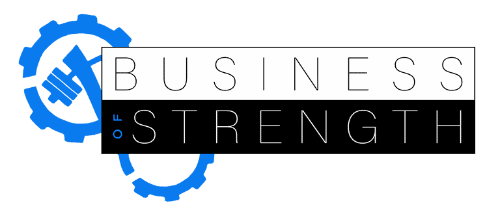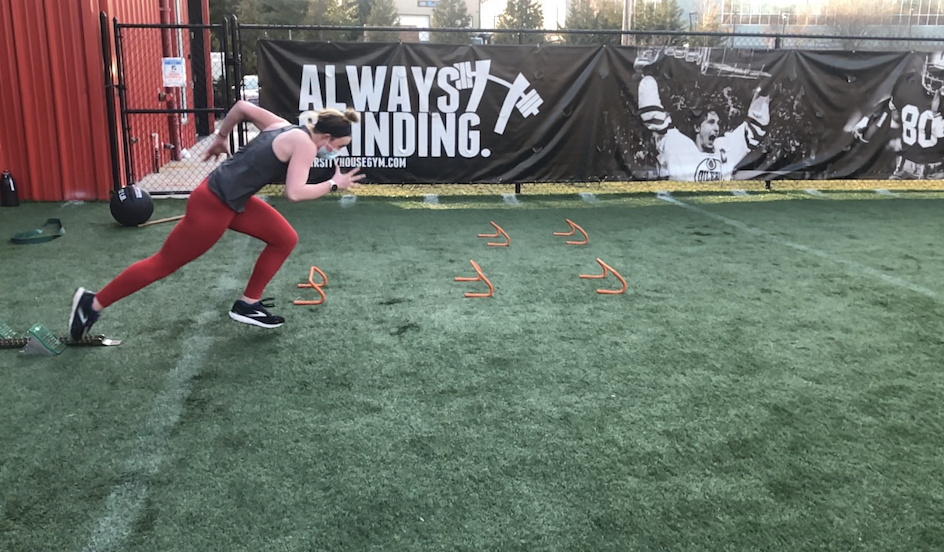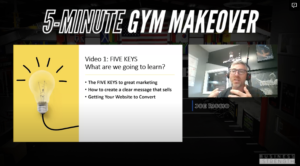Adam Menner | March 26th 2021| 4 min read
Everyone values speed. We all understand its importance. Speed is also contextual. Training linearly, such as track and field athletes requires different modalities than a team sport athlete. Maximal sprinting via absolute linear speed is the foundation for all subsequent qualities that take place.
Maximal sprinting speed represents the far end of the speed/power continuum in the athletic spectrum. There are several unique physiological adaptations to speed work vs. strength work. Many strength coaches will throw out the “more force into the ground is better” analogy when looking at getting kids faster, but that mentality (getting a stronger squat/deadlift etc.) will only work up to a certain point in the acceleration to top speed spectrum of things. Getting a huge squat and deadlift will most definitely help an athlete run a killer 20-30m time, but it is at the 20-30m point where their massive strength may start to work against them in a longer race or sprint.
Strength Training For Maximal Speed
One of the most significant adaptations to speed work is an increased fascicle length of muscle fibers. On the flip side, strength training provides a stimulus that increases pennation angle (pennation angle refers to the angular orientation of the muscle fibers, which provides better intramuscular leverage against resistance), but doesn’t do much to improve fascicle length. Fascicle length is important, because longer muscles can contract more quickly than shorter fascicles. Elite 100m sprinters have muscle fascicle lengths which tend to be longer than their slower counterparts.
In addition to changing the pennation angle, strength training also creates a higher resting muscular tension than other forms of exercise, particularly longer static lifts, such as heavy squats and deadlifts performed in sets of 5 or more. Top sprint speed requires efficient relaxation of the body, and having high resting muscle tension is going to inhibit that contraction/relaxation cycle that is so important to maximal movement speed and power.
Different lifts will also place higher muscle tension in different muscle groups, depending on what lifts you did. Lifts like high-bar squats will tend to place a lot of that muscle tension in the anterior chain and quads. Having quads that have trouble relaxing properly is going to give the “people’s elbow” to your top end speed.
In order to hit maximal velocity, your whole body must be on the same page from a tension-relaxation point of view. With the physiology at hand, it is plain to see that one cannot make a fix to their top end speed only through strength or power training. To get fast, you must train specifically.
#1 Master Pelvic Posture
When it comes to mastery of top-end speed, athletes must have exceptional control of their pelvic position. Athletes should learn to sprint with a neutral to slight posterior pelvic tilt to allow a balance of front and backside sprint mechanics with minimal braking forces. .
The easiest way to do this is through weight room exercises. It’s much easier for each pelvic control because of the slow speed/high force nature of the movement. Selecting the right weight room exercises are essential. Exercises that orient the pelvis will properly activate the hip flexor/rectus femoris.
This is why (last week’s newsletter) I don’t advocate stretching. If your pelvis is already in poor orientation, you are tugging on muscles that are already in the wrong concentric/eccentric length.
Remember, brain – skeletal – muscle – proper outcome.
#2 Maximize Power of Hip and Ankle Extension
We lose quality of movement overtime. More specifically, we lose the right movement variability needed to perform sprinting well. Excessive lifting in the sagittal plane with too much heel reference creates athletes who have some serious neuromuscular issues when it comes to hip and ankle extension.
One of the biggest cues I give to athletes ( Joel Smith talks about this a lot): Hip Lift instead of Knee Lift. The knee lift is great initially, but leaves some biomechanical problems. Simply curing “drive the knee up” is a fool errand, in that, we are teaching athletes to generate power with the wrong lever. The pelvis is the steering wheel for power.
If you teach athlete’s to truly use their hip, you are getting subsequent physical actions that will benefit hip extension in top speed. Contralateral leg stability, oscillatory actions, more posterior hamstring/calf, greater extension of ankle complex – to name a few.
The cue you should provide instead: Lead with the hip or “hip pop.” This is almost like a flying knee kick in martial arts. This will truly teach an athlete to maximize muscle length needed for top speed in sprinting.
#3 Sprinting Should Be the Focus
Sprinting itself must be the primary form of training for those seeking to improve their speed. The S.A.I.D Principle seems to have relevance for everything in sports performance except sprinting. Sprinting requires the most threshold motor units (95-100%) above any other physical activity you can perform. It makes sense to train these qualities.
The weight room is a tool used to supplement an athlete’s ability to get faster. It should not take precedence over sprinting itself.
Depending on the level of the athlete – more or less strength work will be needed to help aid the athlete’s pursuit in getting faster. This is where vertical integration becomes so beneficial.
We walk about this and more in the FREE SPEED course.
You can find here: https://varsityhoopstraining.teachable.com/p/speed/?preview=logged_out
Last week before it is no longer free.
Adam Menner



